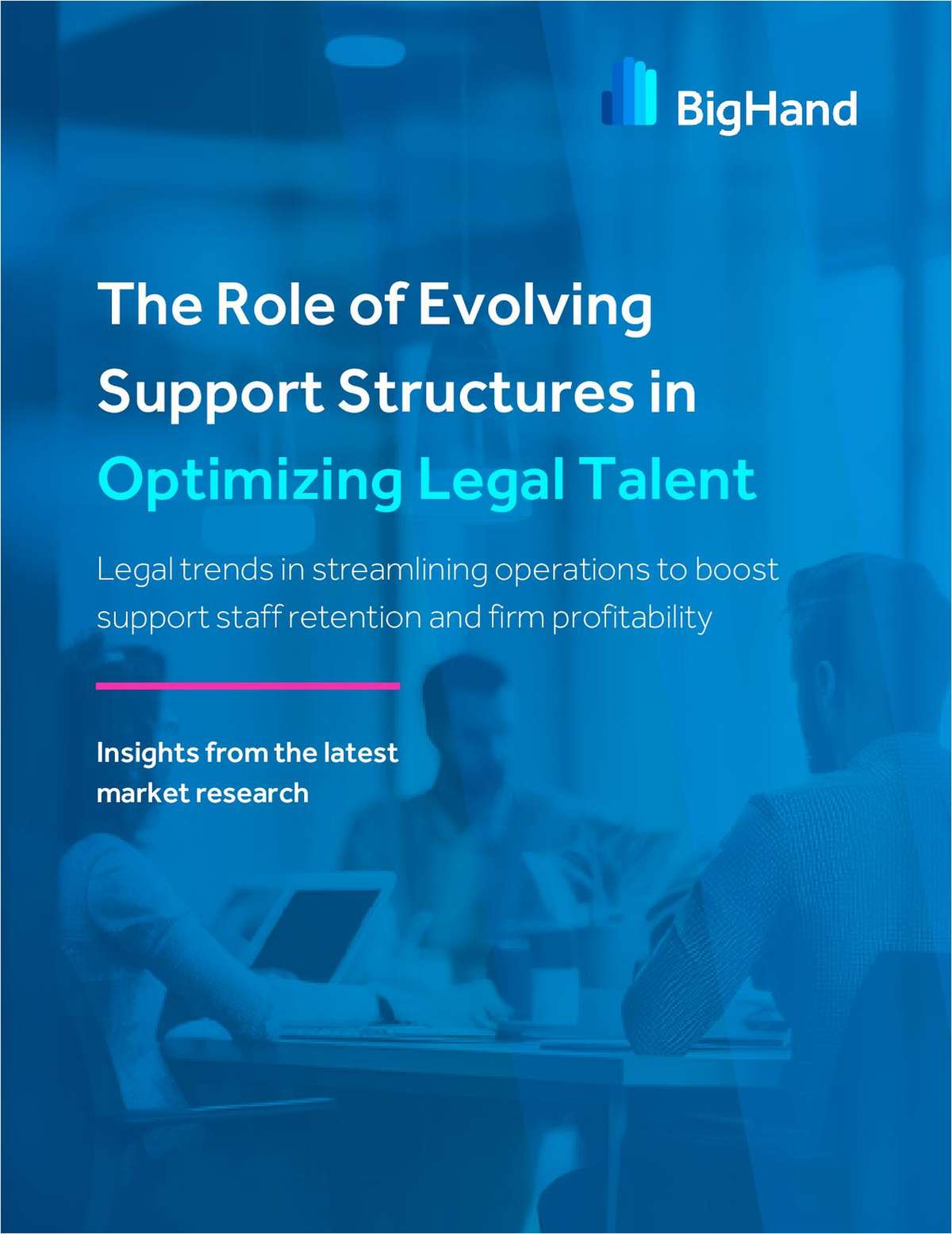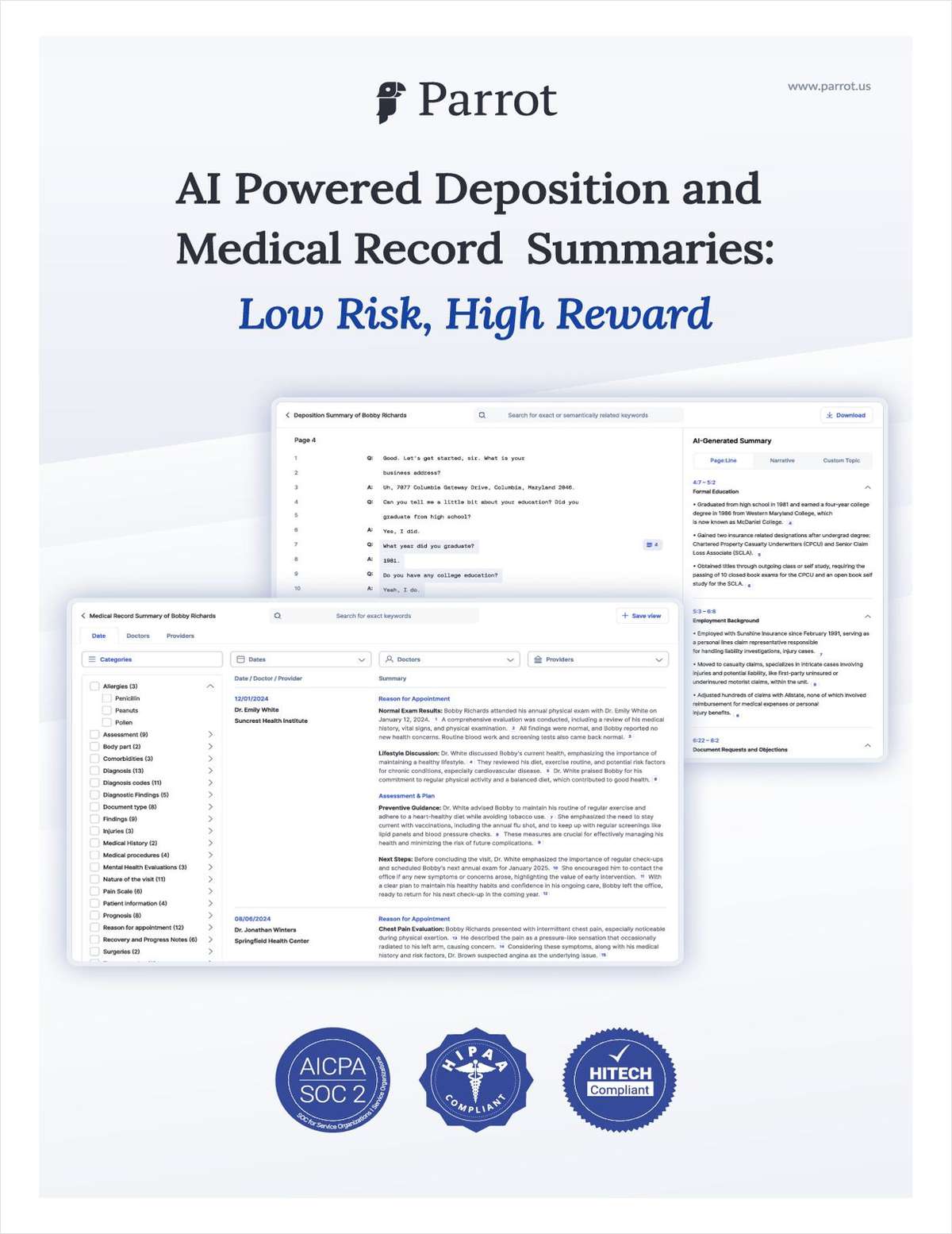Is Artificial Intelligence the Newest Trend in Fashion?
For a growing number of fashion companies, artificial Intelligence is already transforming the methods used to predict trends, create products and interact with suppliers and customers. Not surprisingly, advances in this area of technology raise unique new legal questions, chiefly in the realm of intellectual property and privacy.
August 24, 2018 at 03:40 PM
9 minute read
The original version of this story was published on New York Law Journal
 Shutterstock
Shutterstock
Some of the best-known applications for artificial intelligence, or AI, range from autonomous vehicles to finance to medical diagnosis. But AI is rapidly expanding to every sector of the economy, including fashion. For a growing number of fashion companies, AI is already transforming the methods used to predict trends, create products and interact with suppliers and customers. Not surprisingly, AI advances raise unique new legal questions, chiefly in the realm of intellectual property and privacy.
What is AI?
Broadly defined, AI is computer technology that aims to simulate intelligent human behavior, or to perform cognitive tasks that ordinarily require human intelligence. The development of “strong AI” attempts to replicate human reasoning as closely as possible or even to create sentient machines (think Hal in 2001: A Space Odyssey), while “weak AI” focuses on performing specific tasks that require capabilities similar to human cognition (think customer service chatbots that can answer a limited range of questions). Branches of AI include “machine learning” and “deep learning,” which use algorithms to parse huge volumes of data to draw inferences and make predictions.
AI in the Fashion Industry
AI's ability to gain insights from vast amounts of data has many practical applications in the fashion industry. In an era of “fast fashion” and online influencers, designers, suppliers and retailers are under constant pressure to predict what consumers want and make it available almost instantaneously. Trends change within weeks or even days, not just a few times a year. While companies have access to large volumes of data about both individual consumers and entire markets, from sales figures to social media feeds to customer product reviews, human beings can't process all this data quickly enough for it to be useful, and their conclusions are inevitably influenced by their own biases and preferences.
Enter AI, which promises to do all these things faster and more accurately than humans. Perhaps not surprisingly, the fashion industry is already taking advantage of its capabilities.
AI as Stylist
AI is increasingly being used to predict what individual consumers and broader segments of the public will buy. For example, Burberry has been a pioneer in using AI for this purpose, gathering customer data through loyalty and reward programs that appear on salespeople's iPads when the customers enter a retail store, allowing them to make personalized recommendations. In a concept store in Hong Kong, Alibaba and Guess recently piloted a system called Fashion AI, in which “smart mirrors” analyze garments a customer is holding or trying on and suggest other items to go with them. Every garment in the store incorporates Bluetooth and RFID technology; the smart mirror even alerts store staff to bring selected items to customers.
Online startup Stitch Fix, which raised $120 million in an IPO last year, uses an AI “virtual stylist” to select items for its customers based on data about their preferences, including Instagram and Pinterest feeds and reviews of products purchased on the site. At a time when consumers themselves often don't have time to sort through all their options, these companies aim to use AI to make the shopping experience easier and more personalized, increasing customer loyalty.
AI as Design Assistant
Most recently, AI's image and data processing abilities have found their way into the design process itself. In January 2018, Tommy Hilfiger partnered with IBM and the Fashion Institute of Technology on the “Reimagine Retail” project, in which FIT students created new designs for the Hilfiger brand using IBM Research AI tools and a library of designs from past Hilfiger collections. The AI generated fabric patterns colors and silhouettes, which the students incorporated into their clothing designs. The AI did what would have been the time-consuming job of reviewing thousands of images and provided inspiration for the students' creativity. The winning student design was a plaid jacket that changes color in response to voice and social media input, also analyzed by AI.
Hilfiger also uses IBM's AI technology to analyze sales performance and customer reviews for each item in its collections and to predict future trends—and to aid in designing its collections. The available technology includes a color analysis tool, silhouette recognition tool and print tool, all of which allow human designers to access and combine vast numbers of images for inspiration. The software tools do the time-consuming work of analyzing trends and compiling data, allowing designers to focus on the creative process.
In addition to using an AI virtual “stylist” to select items for its customers, Stitch Fix has introduced a line of “Hybrid Design” items that it claims are created entirely by an algorithm, with humans only approving the designs. Stitch Fix's algorithms analyze images of existing items and comb through the texts of user reviews to identify attributes of items that customers want but that don't already exist in Stitch Fix's collections—and generate actual designs for these items.
Legal Issue, Key Takeaways
While the law hasn't specifically addressed, or even caught up to, the use of AI in fashion, practitioners who advise the industry should anticipate and prepare for the issues that are likely to arise, particularly in intellectual property and privacy.
Copyright
Copyright protection for fashion designs, already somewhat limited in the United States, becomes more uncertain when AI is involved in the design process, because the Copyright Act's “original work of authorship” requirement has been interpreted to mean human authorship. In the current Compendium of Copyright Offices Practices, the U.S. Copyright Office states that it will “refuse to register a claim if it determines that a human being did not create the work.” Discussion of the human authorship requirement has focused not on machine creation but on the claim of animal authorship made in the “monkey selfie” case, Naruto v. Slater (N.D. Cal. Jan. 23, 2016). Nevertheless, this requirement suggests that a fabric pattern created with the help of AI, for example, may not easily be entitled to any copyright protection, although it's not clear how much AI involvement is required before a design ceases to be human-created.
In the UK, by contrast, rights in a machine-created work are owned by the developer of the software: Section 9(3) of the Copyright, Designs and Patents Act provides that “[i]n the case of a literary, dramatic, musical or artistic work which is computer-generated, the author shall be taken to be the person by whom the arrangements necessary for the creation of the work are undertaken.” If a designer uses third-party AI technology as part of the creative process, there's a risk that the AI developer, who might be a contractor or an outside vendor, could own the rights in the resulting designs.
Given the uncertain state of ownership rights, contracts with AI vendors should clearly provide that (1) to the extent that designs created with the help of AI are subject to copyright or other protection, all rights are owned by the client, i.e. the fashion designer, not the vendor; and (2) even if the designs are not copyrightable, the vendor will not disclose them to third parties or use them without the client's authorization.
Trademarks and Counterfeiting
AI offers some good news for brand owners: its image processing capabilities can be used to verify authenticity and detect infringement. DataWeave, a provider of business solutions for retailers, offers a Counterfeit Products Detection solution that can identify counterfeit goods being sold online, images misappropriated from product catalogs, and unauthorized “white labeling,” in which a brand name is removed and replaced with another.
Similarly, Entrupy offers a machine learning app for detecting counterfeit fashion items based on a database of authentic luxury items, which it claims is accurate 98.5% of the time. As these technologies become more reliable and more widely adopted, not only does detection become more easily streamlined, but losses from counterfeiting and their enforcement costs could be significantly reduced.
Data Privacy
Of course, the collection and use of consumer data underlying many AI applications raise privacy concerns. In addition, new AI technologies against the backdrop of fashion's brick-and-mortar presence present unique challenges. Most of the digital age has seen information collected through the web, but increasingly companies are aiming to merge the physical and digital shopping experience with technologies that consumers may not be fully aware of. For companies that do business in the European Union, the General Data Protection Regulation (GDPR), which took effect on May 25, 2018, requires greater individual control over the use of personal data and may drive companies toward “explainable AI,” which is transparent about how it uses data. While California recently passed its sweeping California Consumer Privacy Act, the U.S. currently has no similarly broad regulatory scheme. As fashion brands and retailers collect and maintain increasing amounts of consumer data, they also risk liability and public backlash if the data is collected without the appropriate consumer permissions or misused.
The rise of AI heightens the need for fashion companies to have clear privacy policies and procedures regarding the collection and use of consumer data. In addition, the collection of digital information in the physical world should be closely reviewed to ensure that it is in line with applicable laws and best practices. Contracts with AI developers and vendors should be carefully drafted and reviewed in order to preserve the client's ownership rights in all data collected and protect the client from liability if flaws in the technology result in a breach or a violation of the law.
Conclusion
Given the rapid pace of AI development, the fashion industry will undoubtedly find new applications for it, raising new legal issues that can't yet be predicted. But while the law may take some time to catch up, AI is one fashion trend that's here to stay.
Jeffrey Greene is a partner at Fenwick & West. Anne Marie Longobucco is an OnRamp Fellow at the firm.
This content has been archived. It is available through our partners, LexisNexis® and Bloomberg Law.
To view this content, please continue to their sites.
Not a Lexis Subscriber?
Subscribe Now
Not a Bloomberg Law Subscriber?
Subscribe Now
NOT FOR REPRINT
© 2025 ALM Global, LLC, All Rights Reserved. Request academic re-use from www.copyright.com. All other uses, submit a request to [email protected]. For more information visit Asset & Logo Licensing.
You Might Like
View All

SCOTUS to Decide If the Feds Have to Follow the Forfeiture Rules
Trending Stories
- 1States Accuse Trump of Thwarting Court's Funding Restoration Order
- 2Microsoft Becomes Latest Tech Company to Face Claims of Stealing Marketing Commissions From Influencers
- 3Coral Gables Attorney Busted for Stalking Lawyer
- 4Trump's DOJ Delays Releasing Jan. 6 FBI Agents List Under Consent Order
- 5Securities Report Says That 2024 Settlements Passed a Total of $5.2B
Who Got The Work
J. Brugh Lower of Gibbons has entered an appearance for industrial equipment supplier Devco Corporation in a pending trademark infringement lawsuit. The suit, accusing the defendant of selling knock-off Graco products, was filed Dec. 18 in New Jersey District Court by Rivkin Radler on behalf of Graco Inc. and Graco Minnesota. The case, assigned to U.S. District Judge Zahid N. Quraishi, is 3:24-cv-11294, Graco Inc. et al v. Devco Corporation.
Who Got The Work
Rebecca Maller-Stein and Kent A. Yalowitz of Arnold & Porter Kaye Scholer have entered their appearances for Hanaco Venture Capital and its executives, Lior Prosor and David Frankel, in a pending securities lawsuit. The action, filed on Dec. 24 in New York Southern District Court by Zell, Aron & Co. on behalf of Goldeneye Advisors, accuses the defendants of negligently and fraudulently managing the plaintiff's $1 million investment. The case, assigned to U.S. District Judge Vernon S. Broderick, is 1:24-cv-09918, Goldeneye Advisors, LLC v. Hanaco Venture Capital, Ltd. et al.
Who Got The Work
Attorneys from A&O Shearman has stepped in as defense counsel for Toronto-Dominion Bank and other defendants in a pending securities class action. The suit, filed Dec. 11 in New York Southern District Court by Bleichmar Fonti & Auld, accuses the defendants of concealing the bank's 'pervasive' deficiencies in regards to its compliance with the Bank Secrecy Act and the quality of its anti-money laundering controls. The case, assigned to U.S. District Judge Arun Subramanian, is 1:24-cv-09445, Gonzalez v. The Toronto-Dominion Bank et al.
Who Got The Work
Crown Castle International, a Pennsylvania company providing shared communications infrastructure, has turned to Luke D. Wolf of Gordon Rees Scully Mansukhani to fend off a pending breach-of-contract lawsuit. The court action, filed Nov. 25 in Michigan Eastern District Court by Hooper Hathaway PC on behalf of The Town Residences LLC, accuses Crown Castle of failing to transfer approximately $30,000 in utility payments from T-Mobile in breach of a roof-top lease and assignment agreement. The case, assigned to U.S. District Judge Susan K. Declercq, is 2:24-cv-13131, The Town Residences LLC v. T-Mobile US, Inc. et al.
Who Got The Work
Wilfred P. Coronato and Daniel M. Schwartz of McCarter & English have stepped in as defense counsel to Electrolux Home Products Inc. in a pending product liability lawsuit. The court action, filed Nov. 26 in New York Eastern District Court by Poulos Lopiccolo PC and Nagel Rice LLP on behalf of David Stern, alleges that the defendant's refrigerators’ drawers and shelving repeatedly break and fall apart within months after purchase. The case, assigned to U.S. District Judge Joan M. Azrack, is 2:24-cv-08204, Stern v. Electrolux Home Products, Inc.
Featured Firms
Law Offices of Gary Martin Hays & Associates, P.C.
(470) 294-1674
Law Offices of Mark E. Salomone
(857) 444-6468
Smith & Hassler
(713) 739-1250










